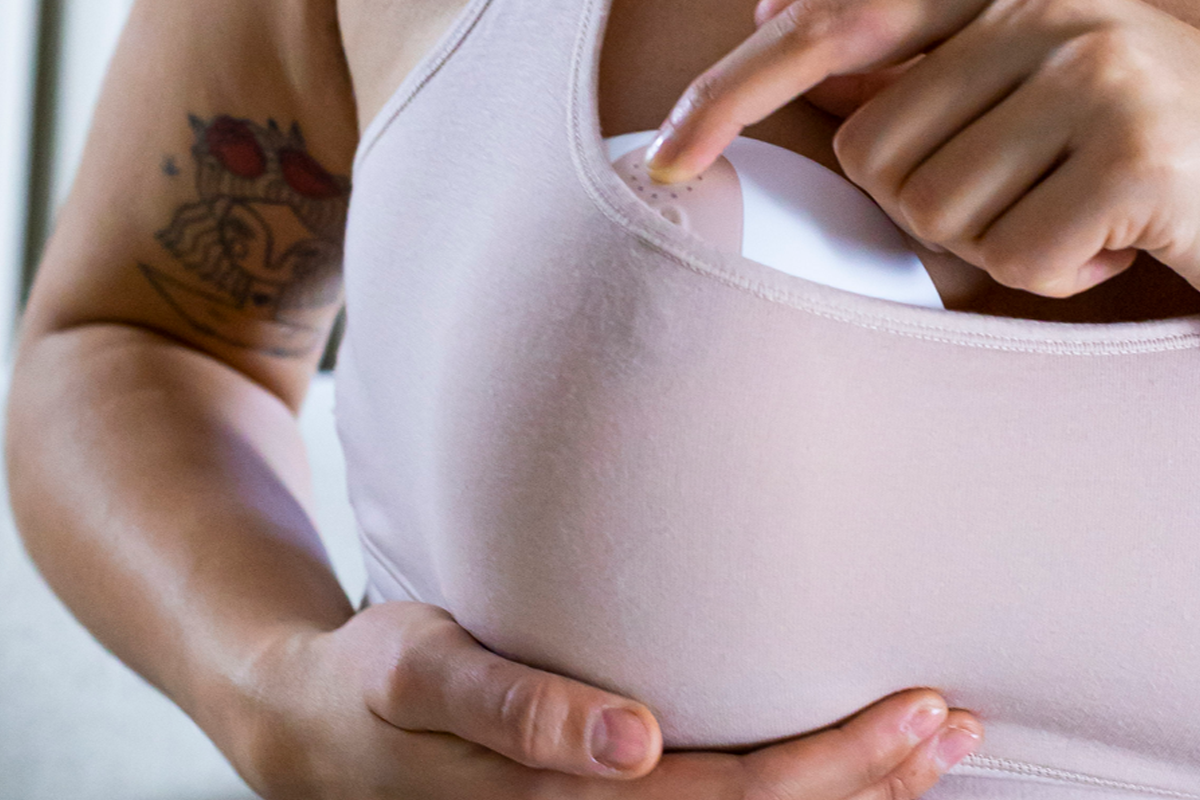Breast milk composition is a fascinating subject that highlights the incredible ability of the human body to nourish and protect infants. Unlike any other food, breast milk adapts to meet your baby’s evolving needs, providing the perfect balance of nutrients, immune factors, and bioactive components. In this article, we’ll explore what breast milk is made of, how its composition changes, and why understanding these elements is essential for both mother and baby. We’ll also compare breastfeeding milk composition with formula, discuss the impact of maternal diet, and answer common questions about mature milk composition, especially for premature infants.
What is breast milk made of?
Breast milk is a complex, living fluid containing hundreds of components that support infant growth and development.
Macronutrients
-
Water: Makes up about 87-88% of breast milk, ensuring optimal hydration for your baby.
-
Carbohydrates: 7% of the milk. Mainly lactose, which provides energy and aids in calcium absorption. Human Milk Oligosaccharides (HMOs) act as prebiotics, supporting healthy gut flora and immune defense.
-
Lipids (Fats): 4-5 % of the milk. The main energy source, including essential fatty acids (omega-3, omega-6, DHA) crucial for brain and retinal development. Cholesterol supports cell growth and may protect against future cardiovascular disease. Fat content of milk varies throughout the day.
-
Proteins: less than 1% of the milk. Includes casein and whey, which are easily digestible and support immune function and growth. There are also Taurine (needed for early brain development and maturation), all essential amino acids, lactoferrin, lysozyme, immunoglobulins…
Micronutrients
-
Vitamins: Everything baby needs is present in human milk. Such as A, D, E (important to protect against anemia), K, and B-complex, which are vital for growth, immunity, and development.
-
Minerals: Including calcium, iron (in small amount), zinc, and iodine, which support bone growth, immunity, and neurodevelopment.
Bioactive elements
Breast milk is rich in bioactive elements that go beyond basic nutrition, actively supporting your baby’s immune system, gut health, and overall development. Here are some of the most important bioactive components and their benefits:
-
Human Milk Oligosaccharides (HMOs):
- Promote the growth of beneficial gut bacteria like bifidobacteria and lactobacilli.
- Reduce the presence of harmful pathogens in the gut.
-
Support the development of the immune system, as a significant portion of immune cells are located in the gut.
-
Immunoglobulins (especially IgA):
- Act as antibodies that protect infants against infections, viruses, and bacteria.
- Help shape the infant’s immature immune system and provide targeted defense against illness-causing pathogens.
- Nucleotides:
-
- Serve as the building blocks of DNA and RNA, essential for rapidly growing tissues such as the intestinal wall.
-
Support immune function and healthy development of intestinal flora.
- Milk Fat Globule Membrane (MFGM):
-
- Contains unique proteins, cholesterol, and phospholipids.
-
Supports brain development and strengthens the immune system.
- Enzymes (e.g., proteases, lipases, amylases):
-
-
Aid in the digestion of proteins, fats, and carbohydrates, making nutrients more accessible for your baby.
-
Aid in the digestion of proteins, fats, and carbohydrates, making nutrients more accessible for your baby.
- Lactoferrin:
-
-
Binds iron, making it more available for absorption and limiting iron for harmful bacteria, which helps protect against infections.
-
Binds iron, making it more available for absorption and limiting iron for harmful bacteria, which helps protect against infections.
- Alpha-lactalbumin (HAMLET):
-
-
Exhibits antimicrobial and antiviral properties, and may help protect against certain cancers by forming complexes that induce tumor cell death.
-
Exhibits antimicrobial and antiviral properties, and may help protect against certain cancers by forming complexes that induce tumor cell death.
- Lactoperoxidase system:
-
-
Produces antibacterial compounds that help control harmful bacteria in the gut, while antioxidants in milk limit tissue damage from oxidative stress.
-
Produces antibacterial compounds that help control harmful bacteria in the gut, while antioxidants in milk limit tissue damage from oxidative stress.
- Growth factors (e.g., VEGF):
-
- Promote the development and maturation of the infant’s gut and brain development.
Breastmilk is a living tissue, just like blood. It changes throughout feeds to match your baby’s needs. Many of these components have unique structures that can’t be replicated in a factory.
💡 The synergy of these bioactive elements means that breast milk not only nourishes but also protects and guides the healthy development of infants in ways that formula cannot replicate.
While infant formula is designed to mimic breast milk’s nutrient profile, it cannot replicate the full range of bioactive components and living cells found in breastfeeding milk composition. These unique elements provide immune protection and developmental benefits that formula cannot match.
How breast milk composition changes over time
Breast milk is not static; its composition evolves to meet your baby’s needs at every stage. The different colors of breast milk can also provide clues about its changing composition and the nutrients it contains.
Colostrum
Produced in the first days after birth, colostrum is rich in proteins, antibodies, and immune factors. Its thick, yellowish appearance has even inspired the term “liquid gold.” It provides essential protection for newborns and helps establish healthy gut flora.
Transitional milk
Appearing between days 3 and 7, transitional milk bridges the gap between colostrum and mature milk. It contains higher levels of fat, lactose, and calories to support rapid growth.
Mature milk
From about two weeks postpartum onward, mature milk supplies the full spectrum of nutrients, immune factors, and bioactive elements. Its composition continues to adapt in response to your baby’s growth and feeding patterns.
Factors that can influence breast milk composition
Breast milk composition can be influenced by several factors, including:
-
Maternal diet and nutritional status
-
Baby’s gestational age and health
-
Stage of lactation
-
Frequency and completeness of milk removal
-
Maternal health conditions and medications
Why understanding breast milk composition matters
Recognizing the unique and dynamic composition of breast milk helps parents and healthcare providers appreciate its vital role in both infant and maternal health.
💡 The benefits extend far beyond basic nutrition, offering powerful advantages for babies and mothers alike.
Benefits for the baby
Breast milk delivers a unique combination of nutrients and protective factors that give babies the best possible start in life:
-
Supports optimal growth and brain development
-
Protects against infections and chronic diseases
-
Promotes healthy digestion and gut microbiota
A breast milk bath is another way some parents use expressed milk for skin nourishment, thanks to its soothing and healing properties.
Benefits for mother
Breastfeeding offers significant health and emotional benefits for mothers, supporting their recovery and long-term well-being:
-
Supports postpartum recovery
-
Reduces the risk of certain cancers and chronic diseases
- Fosters bonding and emotional well-being
Does maternal diet affect breast milk composition?
Maternal diet can influence certain nutrients in breast milk, such as fatty acids and some vitamins. However, the body prioritizes the production of most nutrients to ensure your baby receives what they need, even if your diet isn’t perfect. For example, the omega-3 content in mature milk composition may reflect your dietary intake.
Does breast milk composition vary between mothers?
Yes, breast milk composition can vary between mothers due to genetics, diet, health status, and environmental factors. Even the same mother’s milk can change from feed to feed, and throughout the day, to meet her baby’s needs.
Is breast milk composition different for premature babies?
Mothers of premature infants often produce milk with higher protein and immune factors to support their baby’s unique needs. This specialized composition helps premature babies grow and develop more effectively than formula or donor milk.
Understanding breast milk composition highlights why breastfeeding is uniquely designed to nourish and protect infants. Its ever-changing nature, rich nutrient profile, and powerful bioactive elements offer unparalleled benefits for both babies and mothers. By gaining insight into what breast milk contains, you are better equipped to make confident and informed decisions that support your family’s health and well-being.
Sources:
- CentraCare: What’s in Breast Milk?
- What to Expect: Breast Milk Composition
- Women’s Health: Breastfeeding: Getting Started
- WIC Breastfeeding: Breast Milk is Best
-
Healthline: What’s in Breast Milk?
- La Leche League International: Breast Milk Composition





